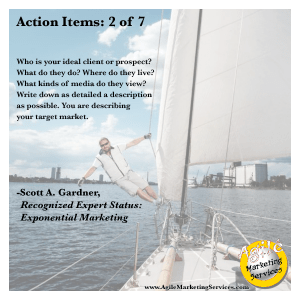
I’m guilty of abusing new connections. But worse, I’m guilty of magic thinking when it comes to connections.
Making a business connection is a first step in a process that requires a lot of work. In the past, I’ve made connections and then launched into sales pitches. This happens to me a lot – and I see a lot of you reading this nodding your heads in agreement. But I’ve also been guilty of perhaps a worse practice, and that’s assuming/hoping/wishing/believing that once I make a connection, that other person will reach out and not only beg me to sell them my services, but also put in one hundred percent of the work to build a relationship.
Beginnings
It can be scary, and it can certainly be a pain, but you have to be willing and able to take that first step once a connection is made. You have to reach out and do – not just 100% of the work, but – 110% of the work to build and grow your new connection into some kind of relationship. Your first step is asking about them, getting to know what motivates them and makes them get out of bed every morning. The next step is offering of yourself, asking “What can I do for you?” The third step, which many people ignore, is actually coming through with whatever you promised in step two!
1 – Ask About Them
Your connection with someone doesn’t even warrant a number – that’s how basic it is. Step #1 is asking about your new connection, and actually listening to, and absorbing, the answer. And I’m not talking about asking, “So, what line of business are you in?” or, “What do you sell?” Ask new new connection an open-ended question about themselves.
“Tell me – what makes Susie Jones rise and shine each morning?”
None of us are ready for this question. Are you? No, we all want to mumble our memorized elevator pitch which is all about what we want to sell them. Here’s the hard part – don’t accept that lame answer. Dig. Re-frame the question, and let them know you’re looking for personal information. Don’t be afraid to tell them explicitly what you want to know.
“C’mon Susie. That’s your canned answer for what you do for a living. I’m asking about your life! What makes your life worth living? What makes you smile every day? What are the top five things in your life that give it meaning?”
Now, listen to that answer, and internalize what they tell you.
2 – Offer A Hand
Listen to the answer to the above question, and start thinking. What can you, personally, offer this person? What other relationships have you developed where you can connect with another person and get your new connection what they need or want? One of my top concerns [Are you paying attention?] is a cat rescue organization called Kitty Corner. Not only are they a client, they’re also where I’ve adopted four of my pets over the years. I’ve yet to have a connection offer to make a donation, or to find me a larger donor for them.
I’m not saying you should offer to move their piano this weekend, but find something you can offer to make their life a little brighter. I use copies of my first book as a business card. But if they mention their kids or grand-kids, I have a selection of signed books by some children’s authors I know. If that’s the only interest I can match, I offer them a copy.
“Your face lights up when you talk about your daughter, Susie. I have a signed copy of a children’s book by a friend of mine. How about I send it to you, and you can spend some quality time reading it together?”
Or maybe your new connection needs life insurance, or is looking for reclaimed barn boards for their new den. If you can help them, offer to do so. And if you can’t help them immediately, offer to keep an eye out for them, maybe offer their services to some of your other connections.
“I don’t have any connections looking for magazine ad space right now, Susie. But I tell you what – if you give me a dozen of your cards, I’ll send them to my local connections along with my personal recommendation that they contact your first. Would that be all right?”
3 – Follow Through
Whatever you’ve promised in step #2, do it! You know how many people who make promises drop the ball. Don’t be one of those folks. Especially if what you’ve offered seems simple or even inconsequential. Most people ignore those promises, whether they make them or have them made. Doing small things can have an amazing impact, both for the do-er and the recipient. You’ll get a sense of accomplishment if nothing else, and they’ll probably be amazed you remembered.
Plus there’s the psychological law of reciprocity, where they feel like they should do something for you now, but that should be totally beside the point.
The important part of this is to honor your word, keep your promises. Even if they never do anything for you. Or maybe I should say, especially if they never do anything for you.
Your Budding Relationship
And this is how you start building a relationship. Once you start developing that relationship, maybe you can ask them if they want to buy whatever is it you’re selling. Or if they know other people who want to buy what you’re selling. Better yet, maybe they have connections you can connect with, and start building relationships with those people too!
So, I’m asking you – YES YOU. What makes your life worth living? What makes you smile every day? What are the top five things in your life that give it meaning? Tell me below. Let’s connect, and start working towards a relationship.








